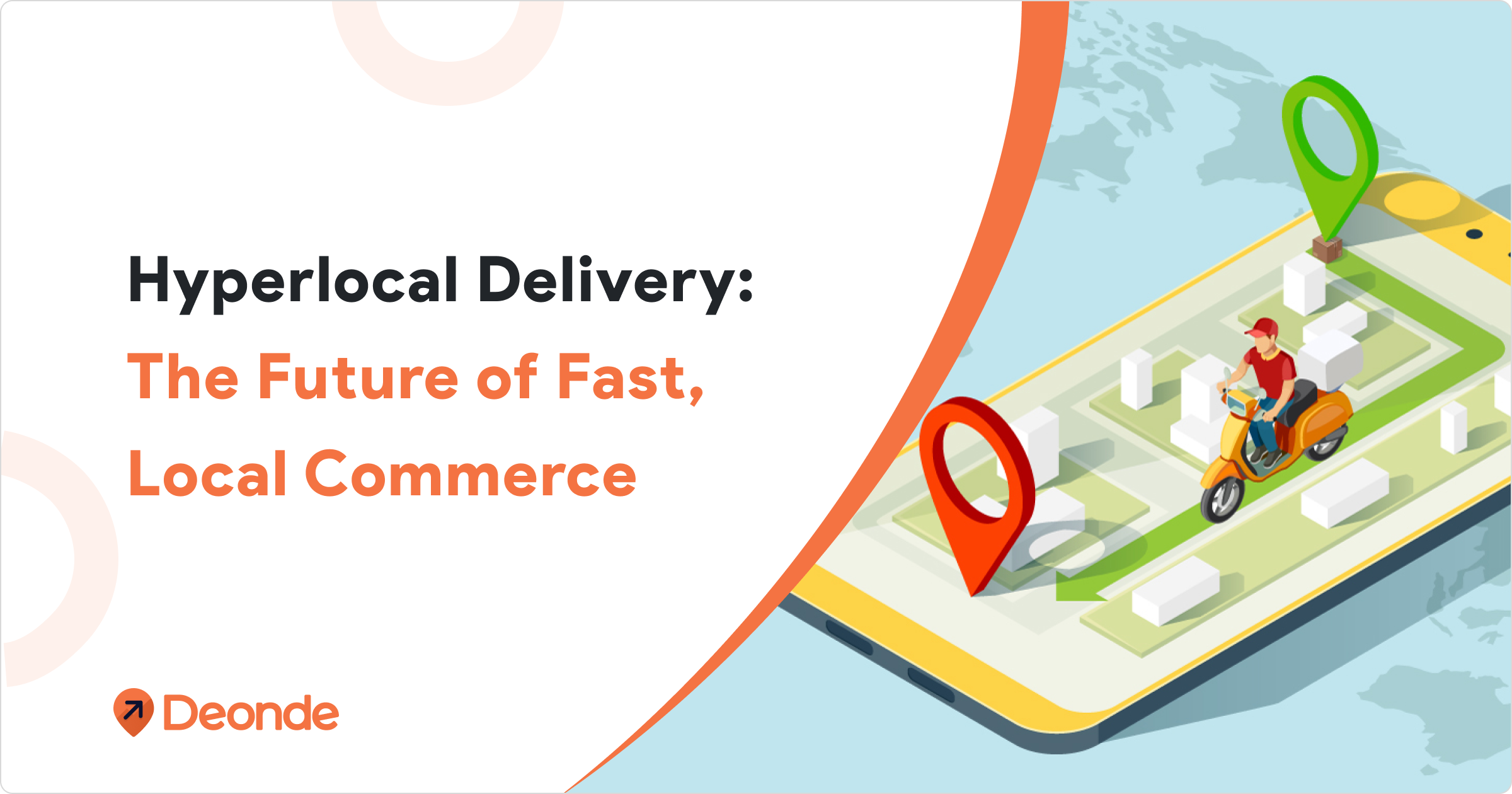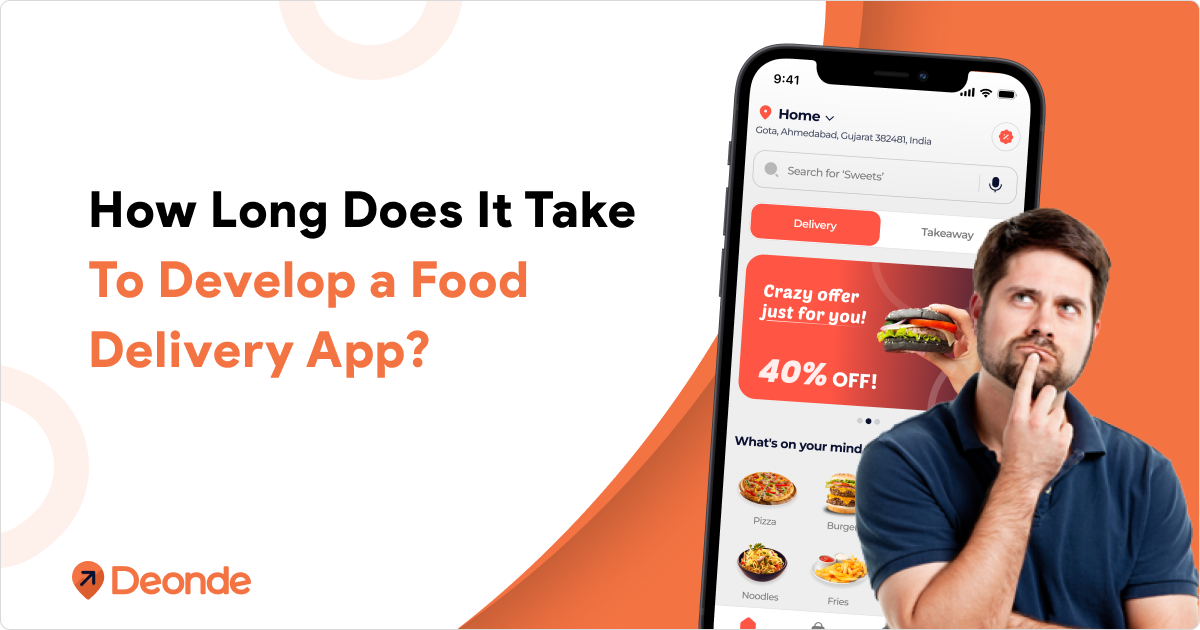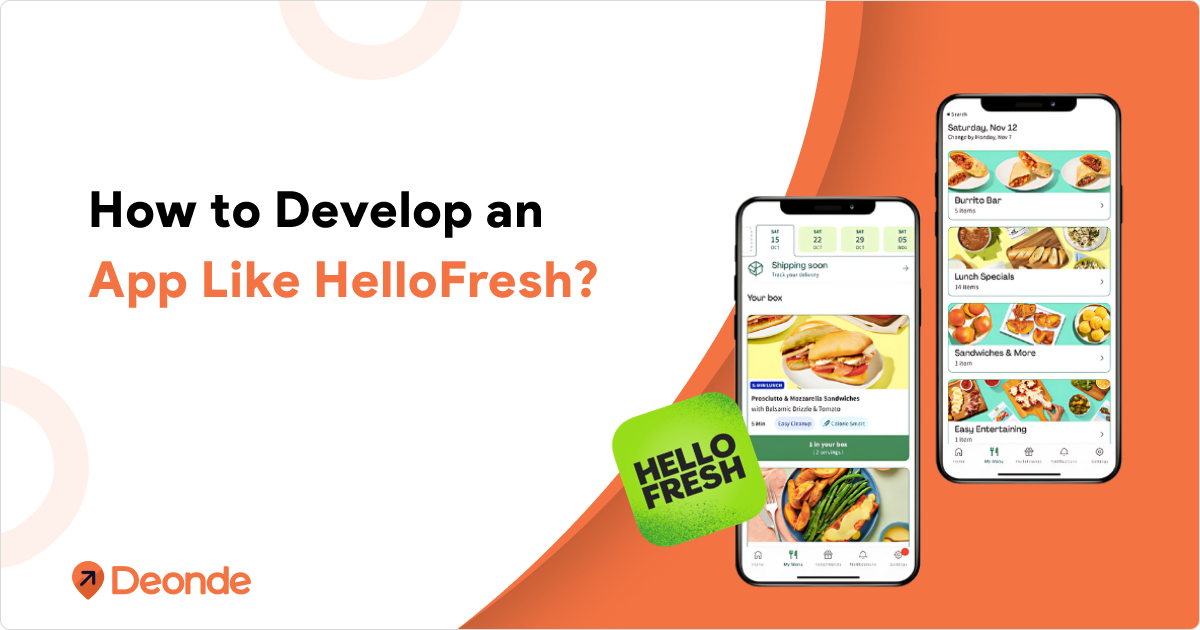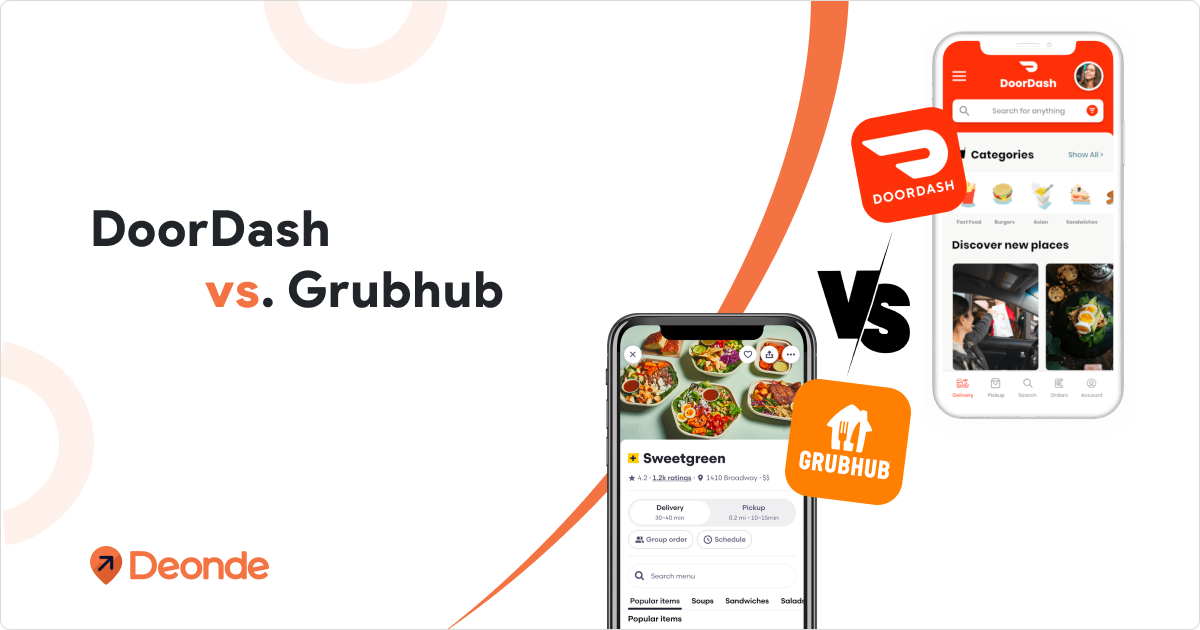Hyperlocal delivery is reshaping the way we buy, sell, and receive goods. In a world where speed, convenience, and personalization matter more than ever, this model offers all three—and then some.
Imagine ordering your favorite cupcakes, a phone charger, or even fresh vegetables, and receiving them in under 15 minutes from a nearby vendor. That’s not just fast delivery — that’s hyperlocal delivery, It’s a retail revolution that connects local sellers, delivery partners, and nearby customers within a defined area—typically 5 to 15 kilometers.
Hyperlocal delivery is revolutionizing how we shop and receive goods. It cuts down delivery time, reduces transportation costs, and supports local businesses — making it a win-win for sellers and buyers. With the rise of e-commerce and changing customer behavior, this model is gaining traction across industries.
This blog dives deep into the meaning of hyperlocal delivery, real-world examples, benefits, and how your business can implement it effectively using smart hyperlocal delivery software solutions like Deonde. Whether you’re a startup or an established brand, understanding this model is the key to staying ahead in today’s fast-moving market.
What Does Hyperlocal Delivery Mean?
Hyperlocal delivery refers to the process of delivering goods or services from a local seller (like a restaurant, store, or pharmacy) directly to nearby customers in the shortest time possible. The delivery radius usually spans 3 to 5 kilometres, focusing on a tight geographical area.
Unlike traditional delivery systems that rely on centralized warehouses and long-distance logistics, hyperlocal delivery leverages local inventories and real-time order management. It ensures that the buyer and seller are geographically close, reducing delivery times and operational costs.
For example, a customer in Mumbai orders a meal from a local restaurant via a hyperlocal delivery app. The order is prepared, picked up by a nearby driver, and delivered in under 15 minutes. This efficiency is made possible by advanced technology, like Deonde’s, which optimizes routes, tracks drivers in real time, and ensures seamless communication between customers, merchants, and drivers.
Real-World Example: What Does Hyperlocal Look Like in Action?
Let’s say you’re craving your favorite burger from a local café. Instead of going through a large-scale aggregator, you order through a hyperlocal delivery app specific to your area. The café, just 2 km away, accepts your order, and within 15 minutes, a delivery partner brings it to your doorstep.
This is how Zomato and Swiggy operate in India, or Instacart and Postmates in the US. They partner with local vendors and use geo-mapping to assign delivery agents based on proximity.
Hyperlocal delivery is not just limited to food. It powers:
- Pharmacy deliveries (1mg, Netmeds)
- Grocery services (BigBasket, Zepto)
- Courier and parcel delivery (Delhivery, DTDC Express)
It’s a decentralized, community-based logistics model that prioritizes speed and personalization.
6 Major Benefits of Hyperlocal Delivery for Businesses
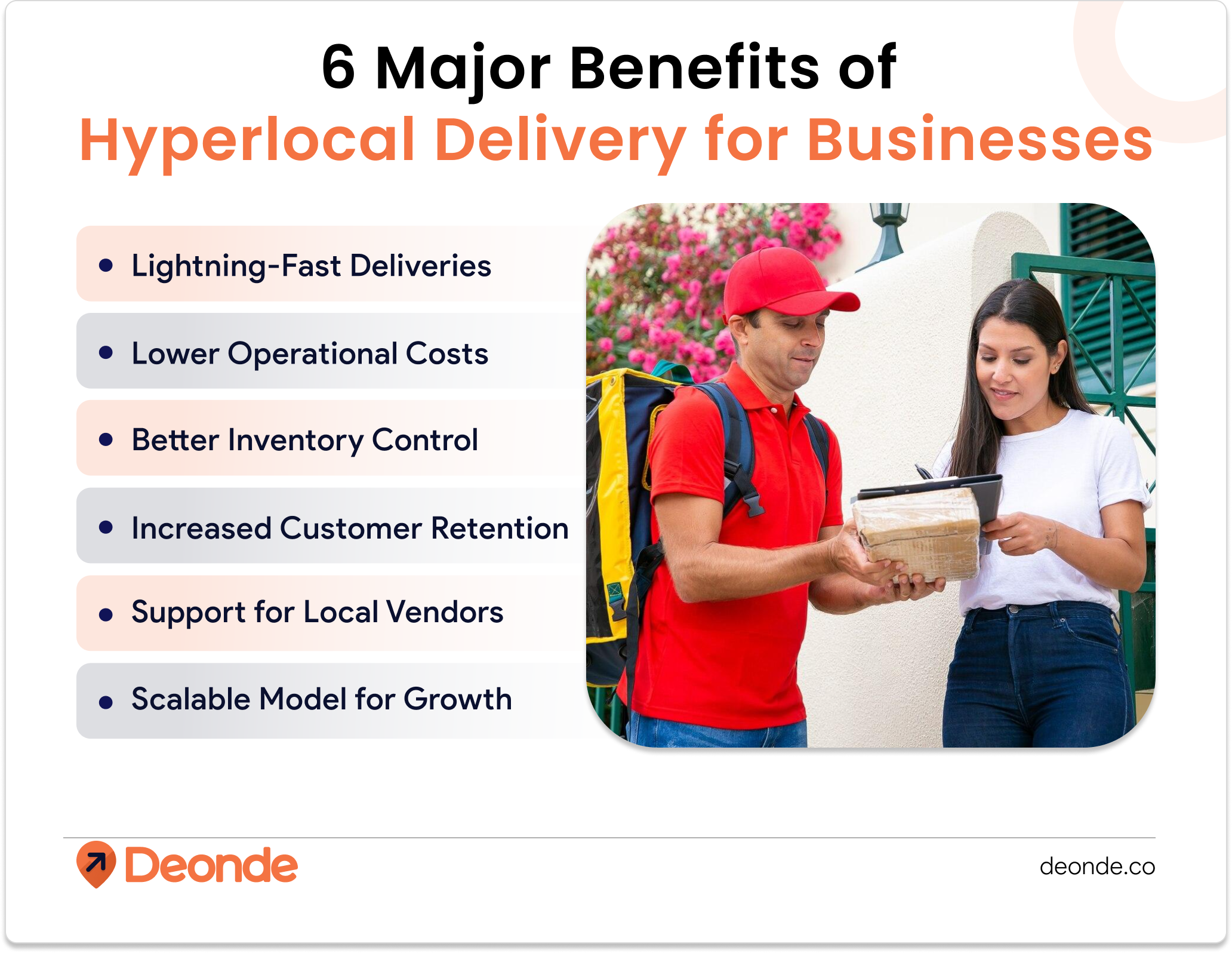
1. Lightning-Fast Deliveries
Speed is everything in today’s on-demand economy. Hyperlocal delivery enables businesses to fulfill orders in as little as 10 to 15 minutes, depending on the product type and location. This rapid turnaround time enhances the overall customer experience, especially for time-sensitive needs like food, medicine, and groceries.
Quick deliveries not only meet customer expectations but also give businesses a competitive edge. The faster your service, the higher the chances of repeat orders, referrals, and positive reviews. With smart routing, real-time order tracking, and optimized delivery partner allocation, businesses can guarantee consistent, fast service every time.
2. Lower Operational Costs
Traditional delivery models often involve centralized warehouses, long-distance shipping, and high logistics expenses. In contrast, hyperlocal delivery eliminates many of these cost-heavy elements by focusing on nearby fulfillment centers or storefronts.
Businesses save on:
- Fuel and vehicle maintenance
- Third-party shipping fees
- Large storage facilities
- Complex supply chain logistics
Since orders are delivered within a small radius, fewer resources are used for each transaction. Whether you’re running a small local store or a multi-branch setup, this cost-efficient model helps maximize profit margins and reduces overall capital expenditure.
3. Better Inventory Control
Managing inventory across multiple locations can be a challenge—but with a hyperlocal model, businesses gain improved visibility and control. Localized inventory allows real-time syncing of stock data, helping businesses avoid common issues like overstocking or running out of essential items.
With the help of hyperlocal delivery software, like Deonde’s platform:
- Businesses can monitor stock across different stores or outlets.
- Inventory levels update automatically after each order.
- Admins receive alerts for low stock, helping them replenish on time.
This level of precision improves operational efficiency and ensures that customers receive accurate delivery promises, building trust and reliability.
4. Increased Customer Retention
In the hyper-competitive online marketplace, convenience and speed play a key role in building brand loyalty. Customers who experience fast and seamless deliveries are more likely to return for future purchases, leave positive feedback, and recommend the brand to others.
Hyperlocal delivery caters to modern buyer behavior—where consumers expect:
- Immediate gratification
- Flexible delivery time slots
- Live tracking of their order
- Customer support with real-time updates
By offering these features consistently, businesses can create a memorable user experience, resulting in higher retention rates and long-term customer relationships.
5. Support for Local Vendors
Hyperlocal delivery doesn’t just benefit the business—it empowers the entire local ecosystem. Small shops, local artisans, and community service providers get a chance to reach nearby customers without having to invest in large infrastructure or nationwide shipping solutions.
This model promotes:
- Community-based commerce
- Increased footfall to local stores
- Job creation for local delivery agents
- Economic upliftment for small vendors
By building partnerships with local sellers and using a platform like Deonde’s white-label hyperlocal solution, brands can aggregate local inventory, create a shared delivery network, and grow faster—without alienating the small business community.
6. Scalable Model for Growth
One of the biggest advantages of hyperlocal delivery is its scalability. As businesses grow, they can replicate the model across different zones or cities using the same infrastructure and technology. There’s no need to reinvent the wheel for each location—just plug in new local vendors, delivery partners, and storefronts into the existing system.
Modern delivery platforms like Deonde offer:
- Multi-store and multi-location management
- Custom branded apps and dashboards
- Zone-based pricing and availability
- Advanced admin and analytics panels
Whether you’re expanding within a city or to multiple cities, the hyperlocal model can grow with you. It’s a future-ready solution for businesses that aim to provide fast, efficient, and personalized delivery experiences at scale.
Exploring the 3 Core Supply Chain Models in Hyperlocal Delivery
Hyperlocal delivery relies on efficient supply chain models to ensure speed and reliability. Here are the three core models driving this ecosystem:
1. The In-House Model: Taking Control of the Wheel
Imagine a local restaurant deciding to handle all its deliveries using its own staff and vehicles. That’s the essence of the in-house model. In this approach, the business owns and manages every aspect of the delivery process, from order fulfillment to the final mile. powered by solutions like Deonde Ressto.
How it Works:
- Inventory: The business typically holds its own inventory, whether it’s prepared food, retail goods, or other products.
- Order Processing: Orders are received and processed directly by the business.
- Delivery Fleet: The business employs its own delivery personnel and maintains its own fleet of vehicles (bikes, scooters, cars).
- Technology: They might use their own internal systems or integrate basic delivery management software for dispatch and tracking.
Who typically uses this model? Smaller local businesses, restaurants with a strong delivery focus, and businesses where quality control and direct customer interaction are paramount often lean towards this model, especially in their initial stages.
2. The Aggregator Model: Leveraging a Shared Network
Think of popular food delivery platforms or marketplaces that connect customers with various local businesses. This is the aggregator model in action. Here, a third-party platform manages the delivery network, allowing businesses to focus on their core operations
How it Works:
- Platform Integration: Businesses list their products or services on the aggregator’s platform.
- Order Reception: Customers place orders through the aggregator’s app or website.
- Delivery Network: The aggregator has its own pool of independent delivery riders or partners with logistics providers.
- Dispatch and Tracking: The aggregator’s technology handles order dispatch, rider assignment, and real-time tracking for customers.
Who typically uses this model? Restaurants, grocery stores, pharmacies, and other retailers looking to expand their reach and offload the complexities of delivery often utilize aggregator platforms.
3. The Hybrid Model: Blending the Best of Both Worlds
As the hyperlocal delivery landscape matures, many businesses are adopting a hybrid approach, strategically combining elements of the in-house and aggregator models to optimize their operations.
How it Works:
- Strategic Allocation: Businesses might handle deliveries within a core radius using their own fleet for better control and customer service.
- Extended Reach via Aggregators: They can partner with aggregators to serve customers beyond their primary delivery zone or during peak demand periods.
- Specialized Deliveries: In-house teams might handle high-value or time-sensitive deliveries, while aggregators manage standard orders.
- Technology Integration: Businesses often integrate their own systems with aggregator platforms for seamless order flow and management.
Who typically uses this model? Growing businesses that have outgrown the limitations of a purely in-house model but want to retain some control over the customer experience and optimize costs often find the hybrid approach beneficial.
Each model has its strengths and challenges. Businesses must choose based on their size, budget, and customer expectations to optimize their hyperlocal logistics.
Why Hyperlocal Delivery is Gaining Momentum Across Industries?
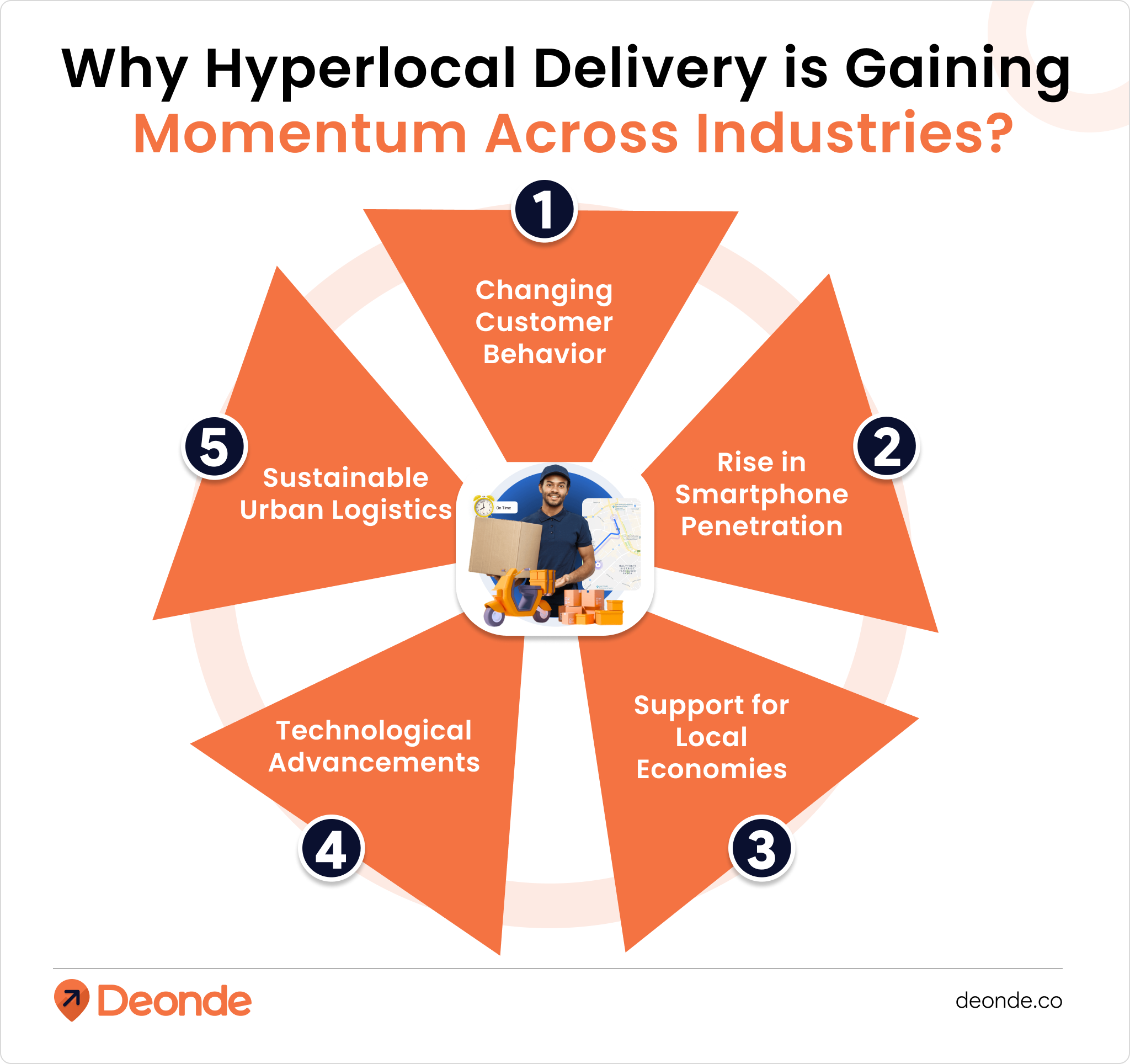
So, why is hyperlocal delivery the next big thing? The answer lies in evolving consumer expectations and market trends.
1. Changing Customer Behavior
Today’s consumers want instant gratification. Waiting days for delivery is no longer acceptable. Hyperlocal satisfies the demand for speed.
2. Rise in Smartphone Penetration
More people are shopping online than ever before, especially in Tier 2 and Tier 3 cities. Hyperlocal apps capitalize on this by making ordering simple and location-based.
3. Support for Local Economies
Hyperlocal platforms empower local vendors to compete with giants. Customers also prefer supporting nearby businesses, especially post-COVID.
4. Technological Advancements
With GPS, real-time tracking, AI-based dispatching, and automated inventory systems, it’s easier to set up a smart, hyperlocal delivery network.
5. Sustainable Urban Logistics
Cities are congested. Long-distance delivery trucks add to the problem. Hyperlocal uses two-wheelers or electric vehicles, reducing traffic and emissions.
Which Brands or Businesses Should Embrace Hyperlocal Delivery?
While almost any brand can benefit from faster delivery, some sectors are naturally more aligned with the hyperlocal model.
Ideal Business Types:
- Restaurants and Cloud Kitchens: Immediate demand and short shelf life of products
- Grocery Stores: Frequent, urgent orders
- Pharmacies: Time-sensitive needs
- Florists and Gift Shops: Same-day delivery for special occasions
- Pet Stores: Last-minute food or supply needs
- Bakeries and Fresh Produce Vendors: Quality depends on delivery time
- Local Retailers: To compete with online marketplaces
Emerging Trends:
- Hyperlocal fashion deliveries in metros
- DIY and home improvement supplies
- On-demand mobile repair services
If your business relies on quick turnaround times, customer loyalty, and community-driven sales, hyperlocal delivery is not just an option — it’s a necessity.
Final Thoughts
The future of on-demand commerce is hyperlocal. Whether you’re running a single store, a chain of restaurants, or a delivery startup, this model empowers you to serve customers faster, better, and more cost-effectively.
With platforms like Deonde’s Hyperlocal Delivery Software, you don’t need to worry about building everything from the ground up. You get ready-made solutions with real-time tracking, delivery partner management, customer notifications, and powerful admin panels—all under your brand name. Explore pricing to find the perfect plan for your business.
If you’re ready to meet your customers where they are—nearby and in real time—then it’s time to go hyperlocal. Sign up now to start transforming your delivery operations today!

